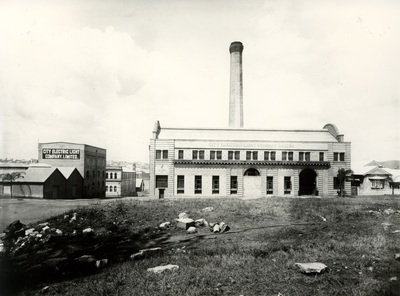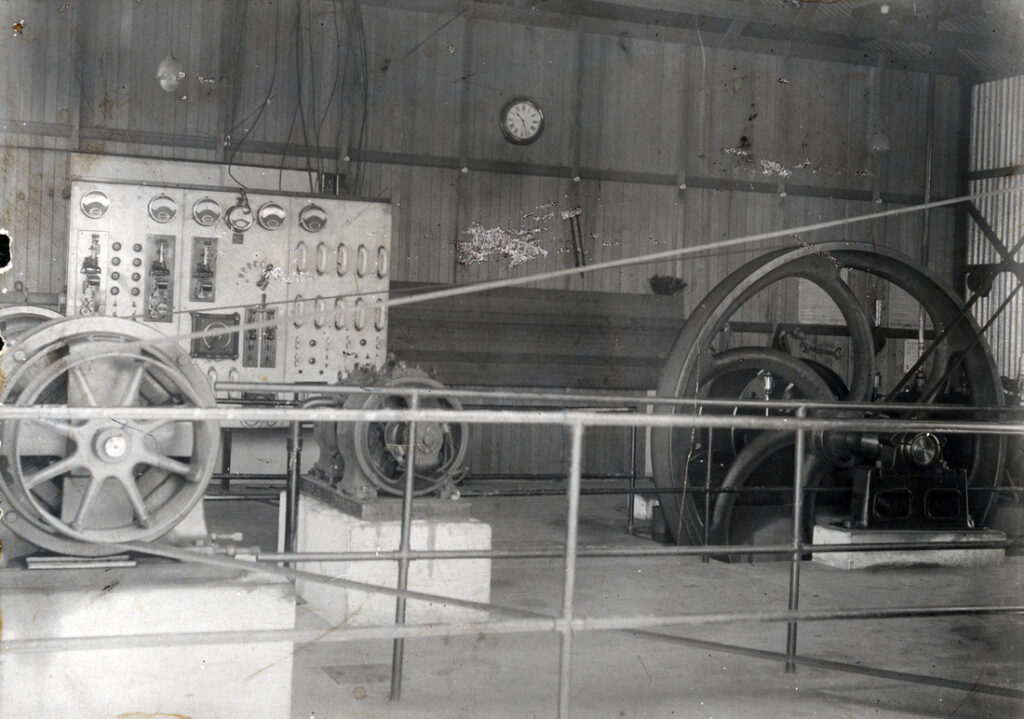
1910’s Electric Memories









1910/11
More demand for supply led to further expansion for CEL in Brisbane. The William Street Powerhouse began its work with the first Parsons 700 kW steam turbo-dynamo set ordered from William Adams and Co., Brisbane, in 1910 and operating in July 1911. Another 500 kW turbo-dynamo set was delivered from the English Construction Co, England, and began operation in the same year, as did a 700 kW set that was transferred from the Ann Street Powerhouse, operated by the former Brisbane Electric Light Company (BESCo), which became CEL in 1904. The capacity of CEL’s William Street Powerhouse in 1911 was 1900 kW with the combined output of the powerhouses in Ann and William Street being more than 2500 kW. During 1912 and 1913, most of the boilers were moved from Ann Street and installed in William Street Powerhouse.
1912: Warwick
Warwick’s Electric Energy Supply Company Ltd was inaugurated in 1912 and its supply area was restricted to the city of Warwick and small part of Glengallon. Warwick had its first electricity supply when the Warwick Powerhouse was built in 1912. The powerhouse was operated by the Electric Energy Supply Company and it was claimed that the Company was starting with ‘18 or 19 consumers and nearly 200 lights’, which was a large number of electric lights for a town at that time. By 1913 there were 53 consumers and at the end of 1961, consumers from the Warwick area numbered more than 4,200. The first transmission line to Warwick was energised by Toowoomba Electric Light Company (TELCo) in 1942. The Warwick company had been taken over by TELCo in 1940 when there were 1,400 consumers out of 7,000 in the supply area.

1915: Barcaldine
The history of electricity supply in Barcaldine goes back to 1898 when the Barcaldine Shire Council first considered introducing electricity to the town. It eventually happened in 1915. Power came to the town on Queensland Day, 28 August with a ceremonious switching-on of electric street lights and electrically-operated bore water pumping equipment for the town. The small engine provided a limited supply of DC to the town. Barcaldine continued to use its DC power until 1948 when the system was changed to AC. When the powerhouse plant was updated in 1957 and new ‘gas-cum-oil’ plant was operating efficiently, Barcaldine Shire Council was able to offer transmitted supply to Aramac and Muttaburra to the north of Barcaldine.
1917: Ipswich Electric Supply Company
The history of electricity supply in Ipswich can be traced to the late nineteenth century when Ipswich City Council was granted an Order-in-Council in1898 to supply electricity to Ipswich. However, the council did not implement the Order. The town had a substantial railway workshop and around 1903, a Powerhouse was built on the site to supply Alternating Current (AC) power to the workshop. Supply to the town was not part of the plan. Most power systems in operation in Queensland were Direct Current (DC) at that time, which was limiting. The changeover from DC to AC was very slow in Queensland. The use of AC assisted electricity authorities to transmit power over long distances, and as Mercer explained
It also enabled the economic benefits of load diversity to be captured, with loads of different kinds spread over many more hours of the day, giving more economic employment of the capital invested.
In Brisbane, with forethought, the City Electric Light Company (CEL) had installed AC in its William Street Powerhouse by 1914. A proposal was put forward by CEL to establish a subsidiary company, which would supply Ipswich with electricity at cost plus 15 per cent. Eventually, the scheme received support from Ipswich City Council and the surrounding shires and in 1917, the council applied for an Order-in-Council. The subsidiary company, Ipswich Electric Supply Company (IESCo) was formed and electricity was supplied to Ipswich with a 5kV line, which initially came from CEL’s William Street Powerhouse in Brisbane, then later, from Bulimba ‘A’ Powerhouse.
1919: Murwillumbah Power Station
Electricity was first made available to consumers in 1919, from plant with an installed capacity of 85 kW. There were around 130 consumers in 1923. A unit of power cost seven pence (7d.) and electric light was one shilling and a penny (1/1d.) per unit.
